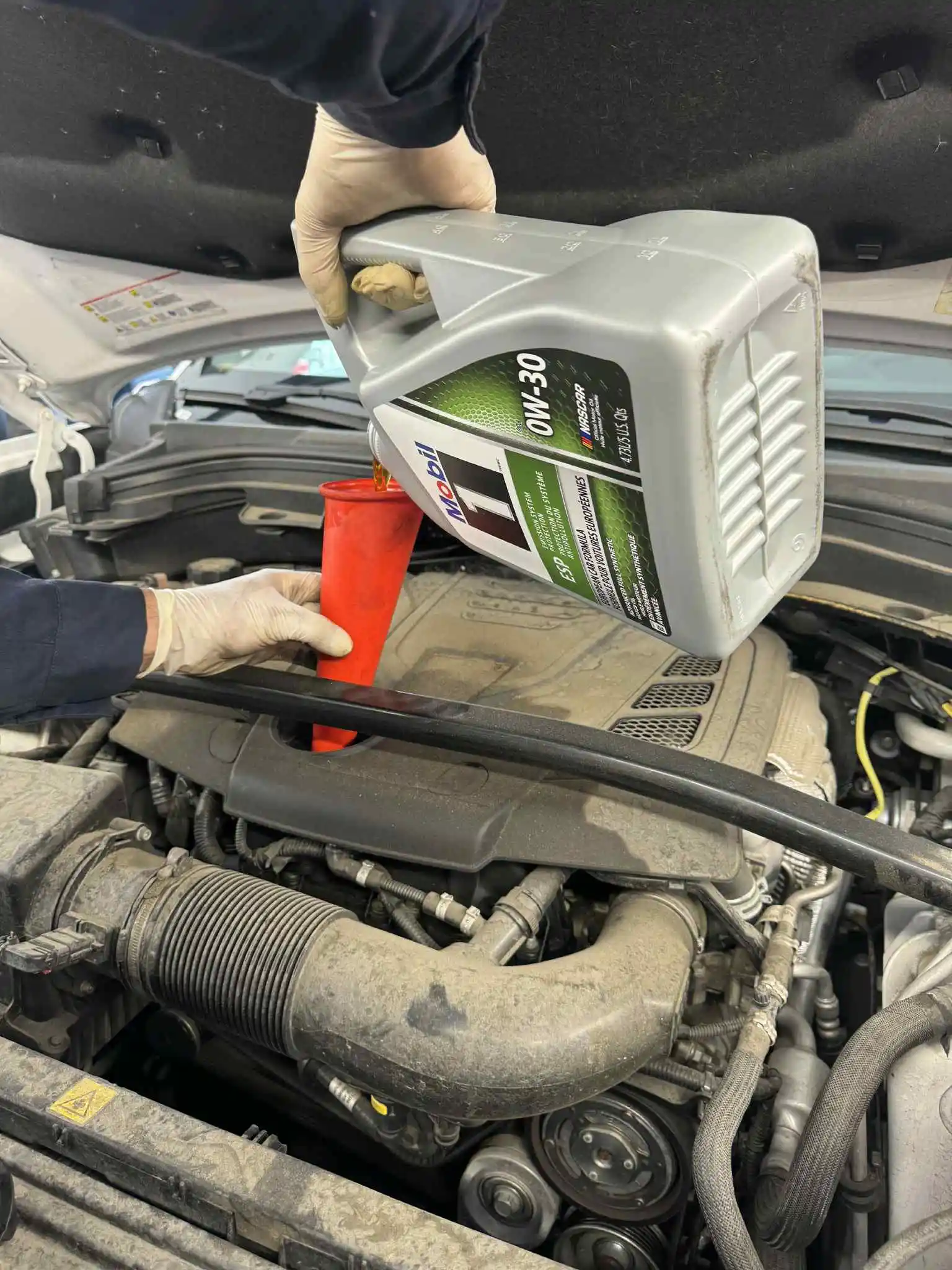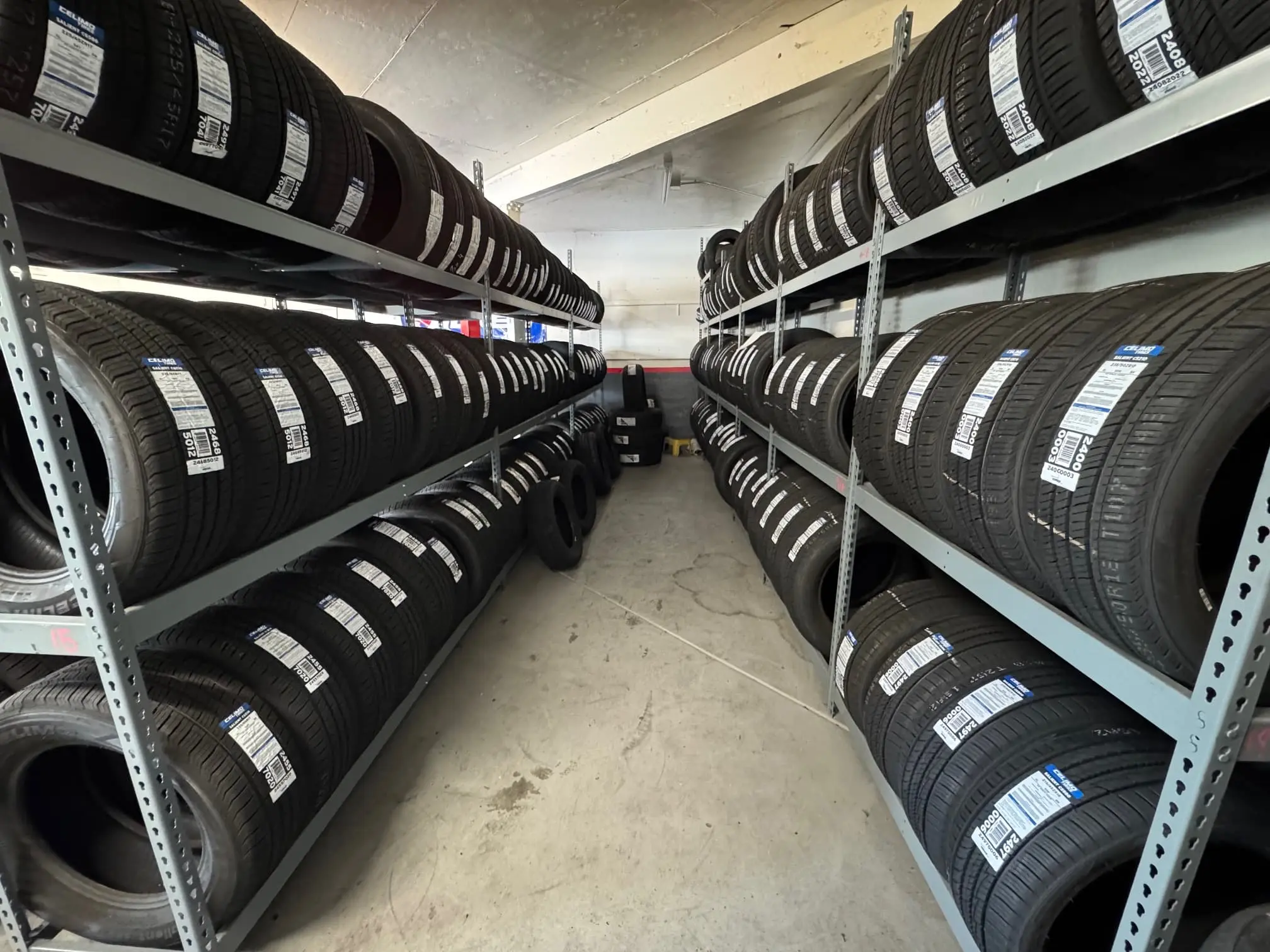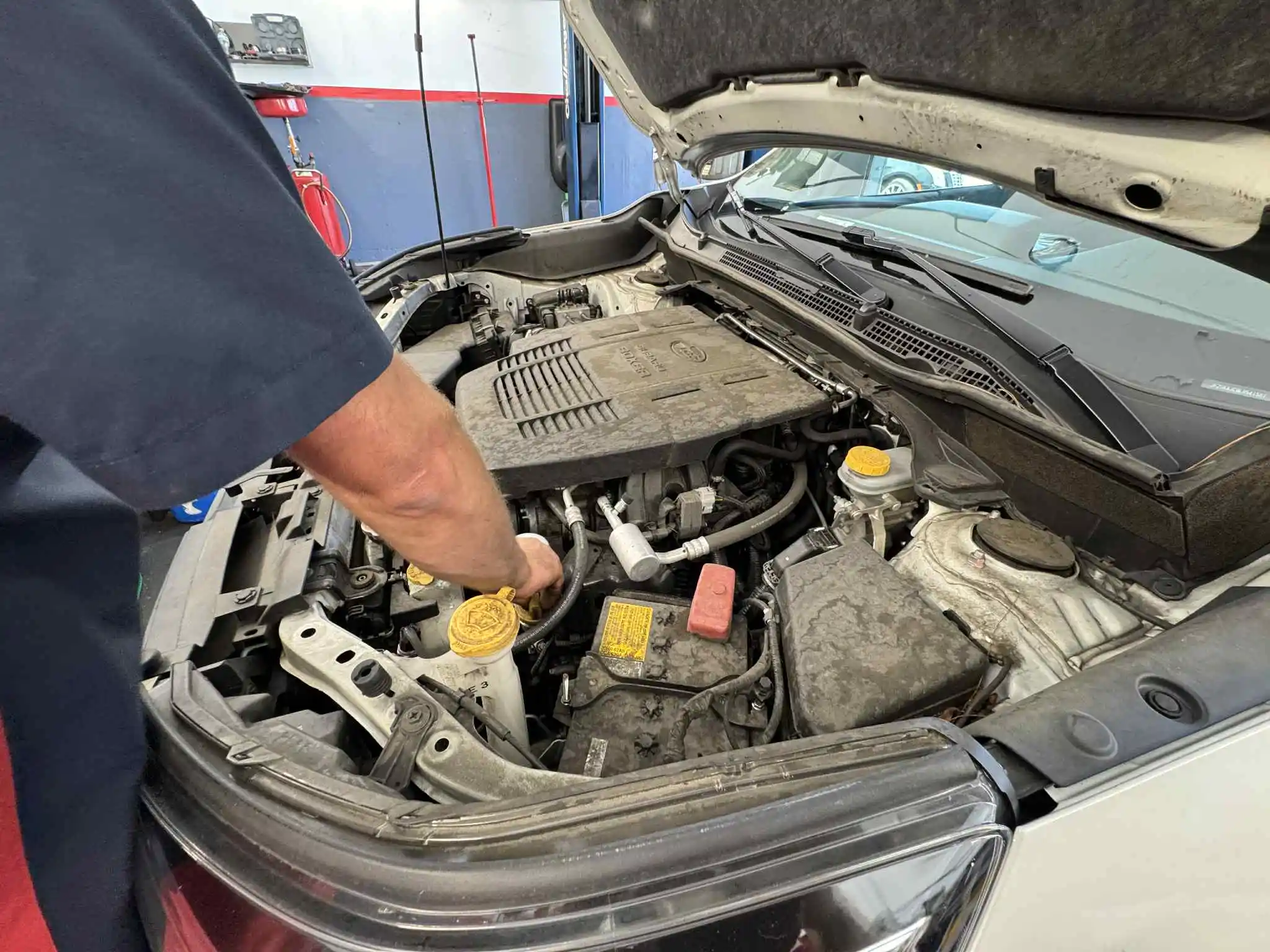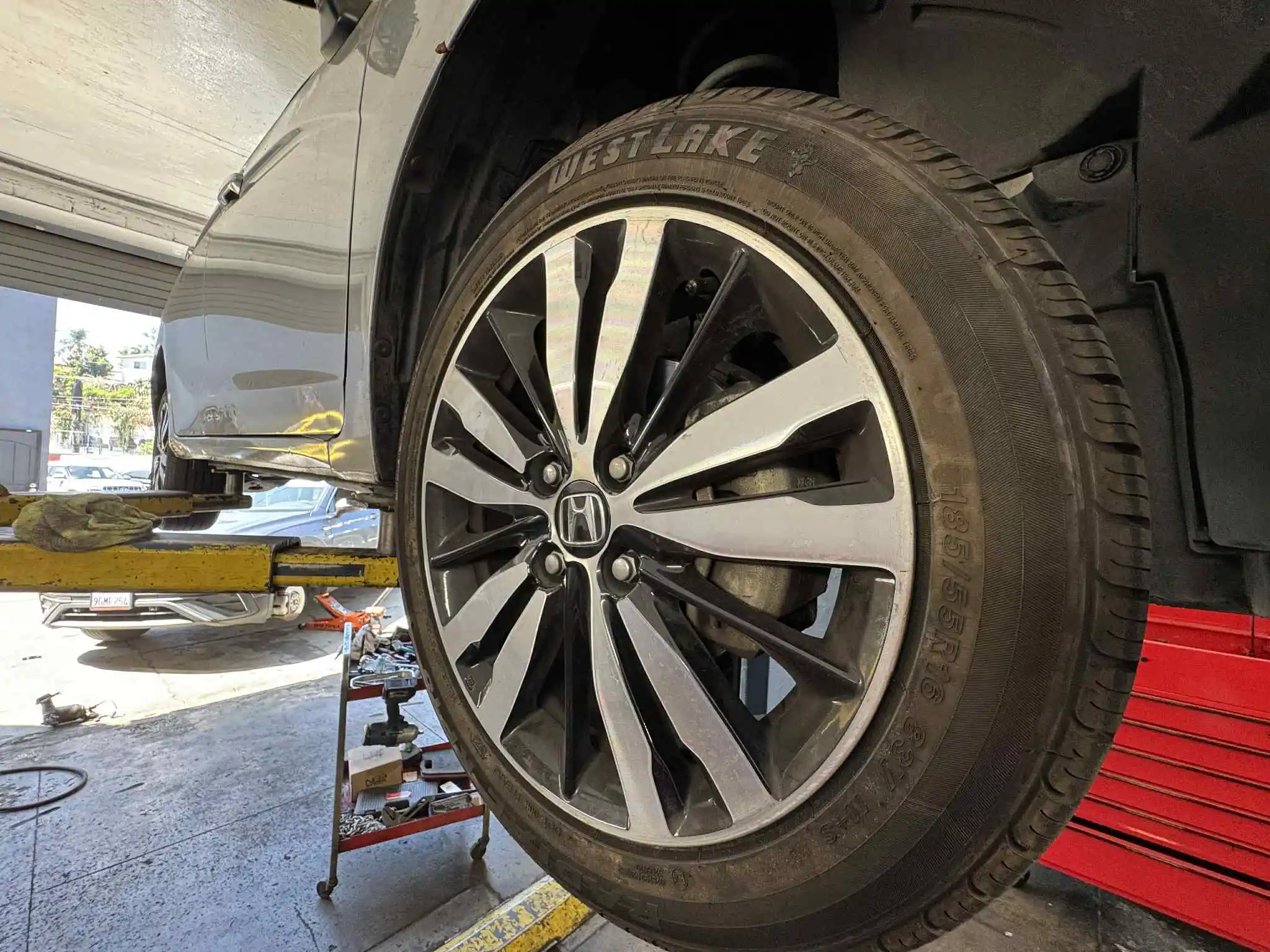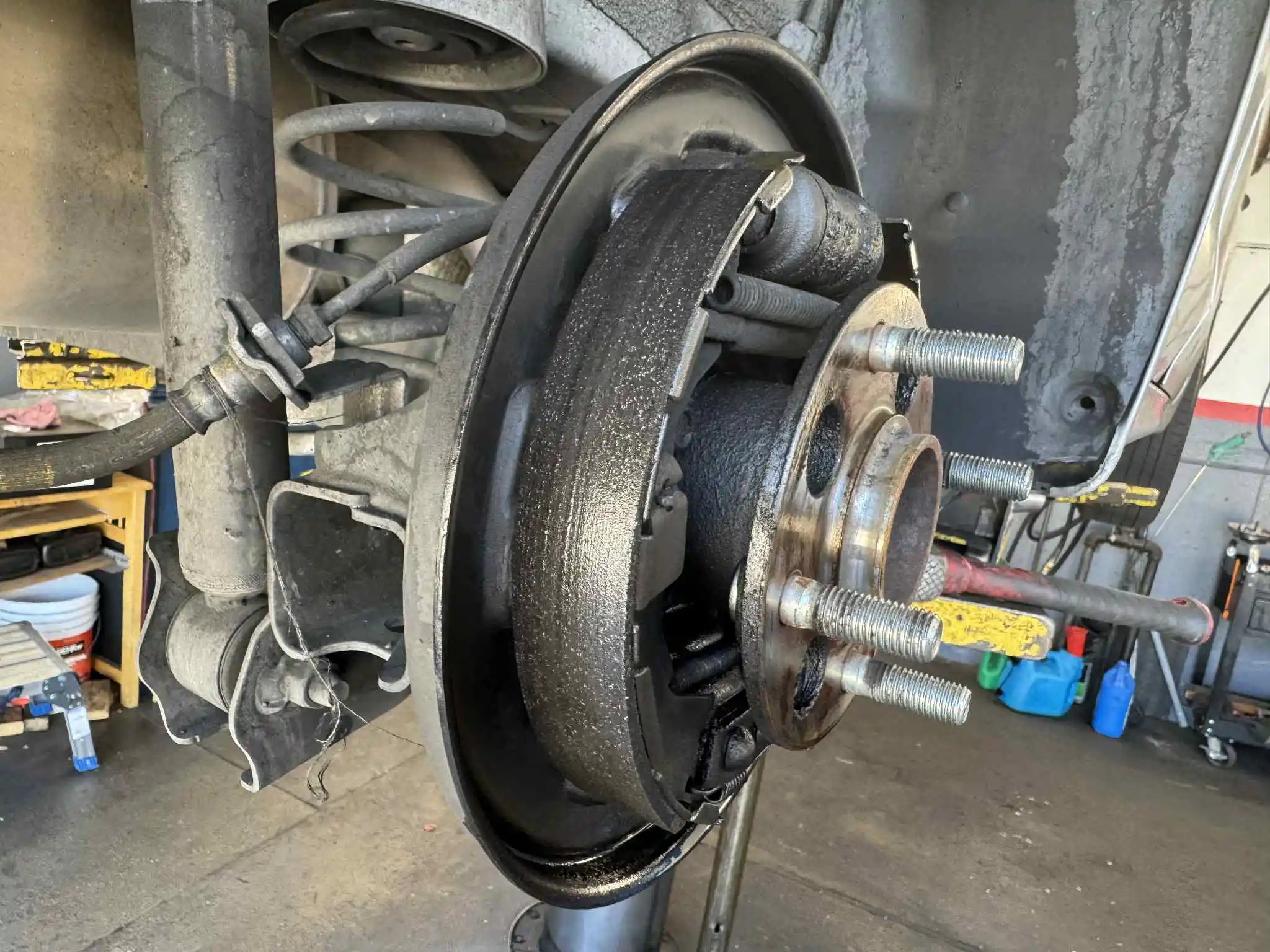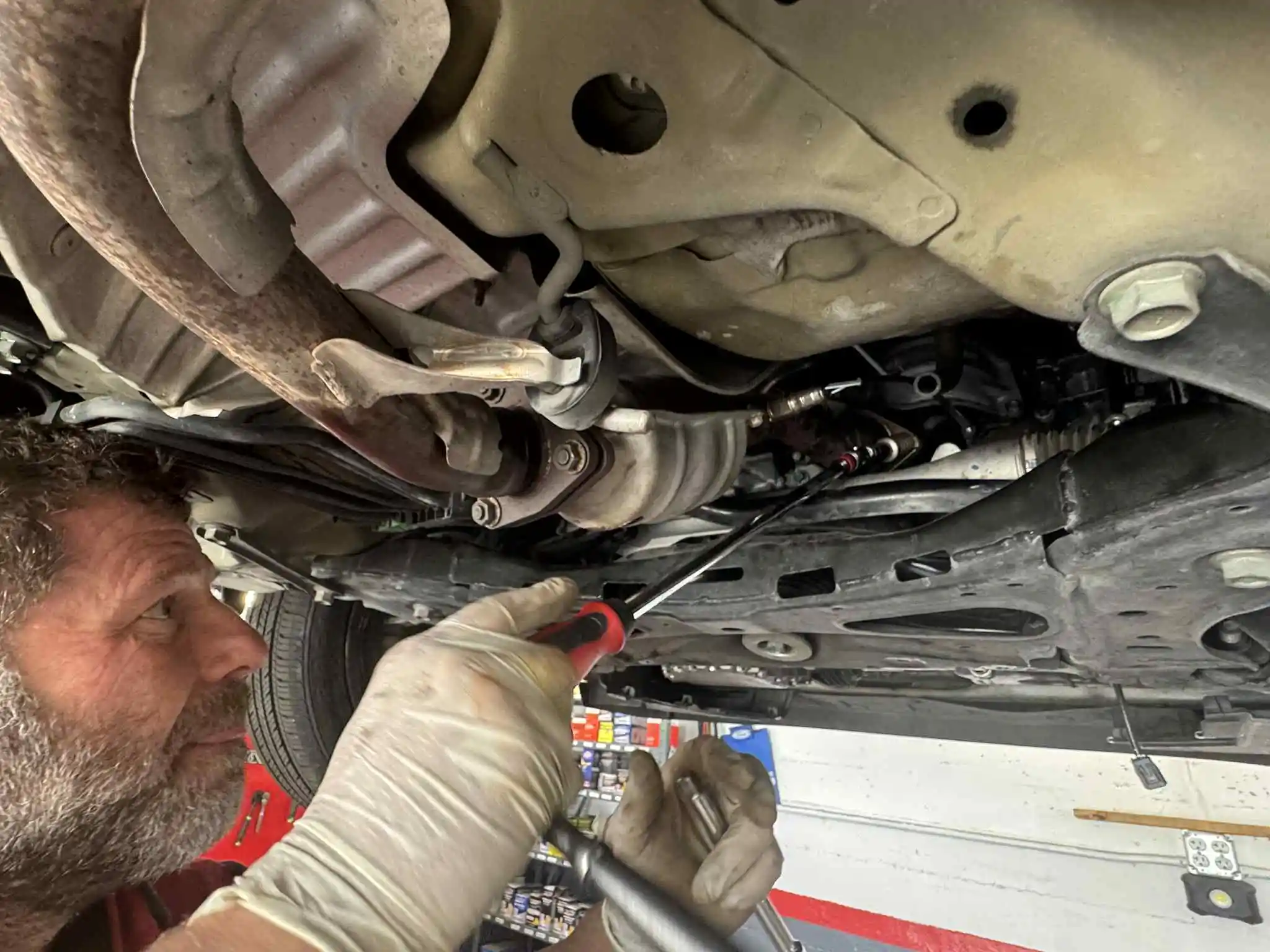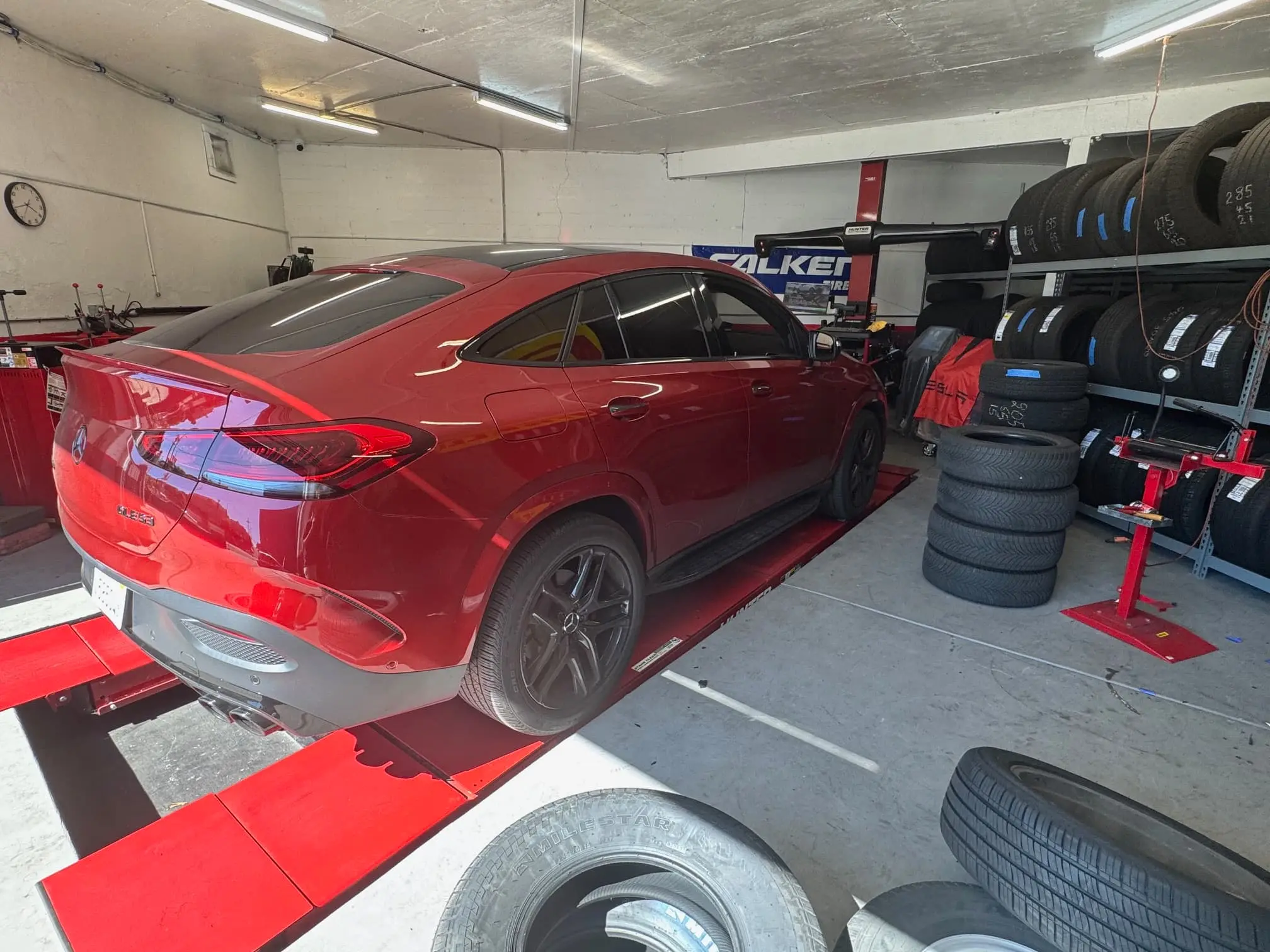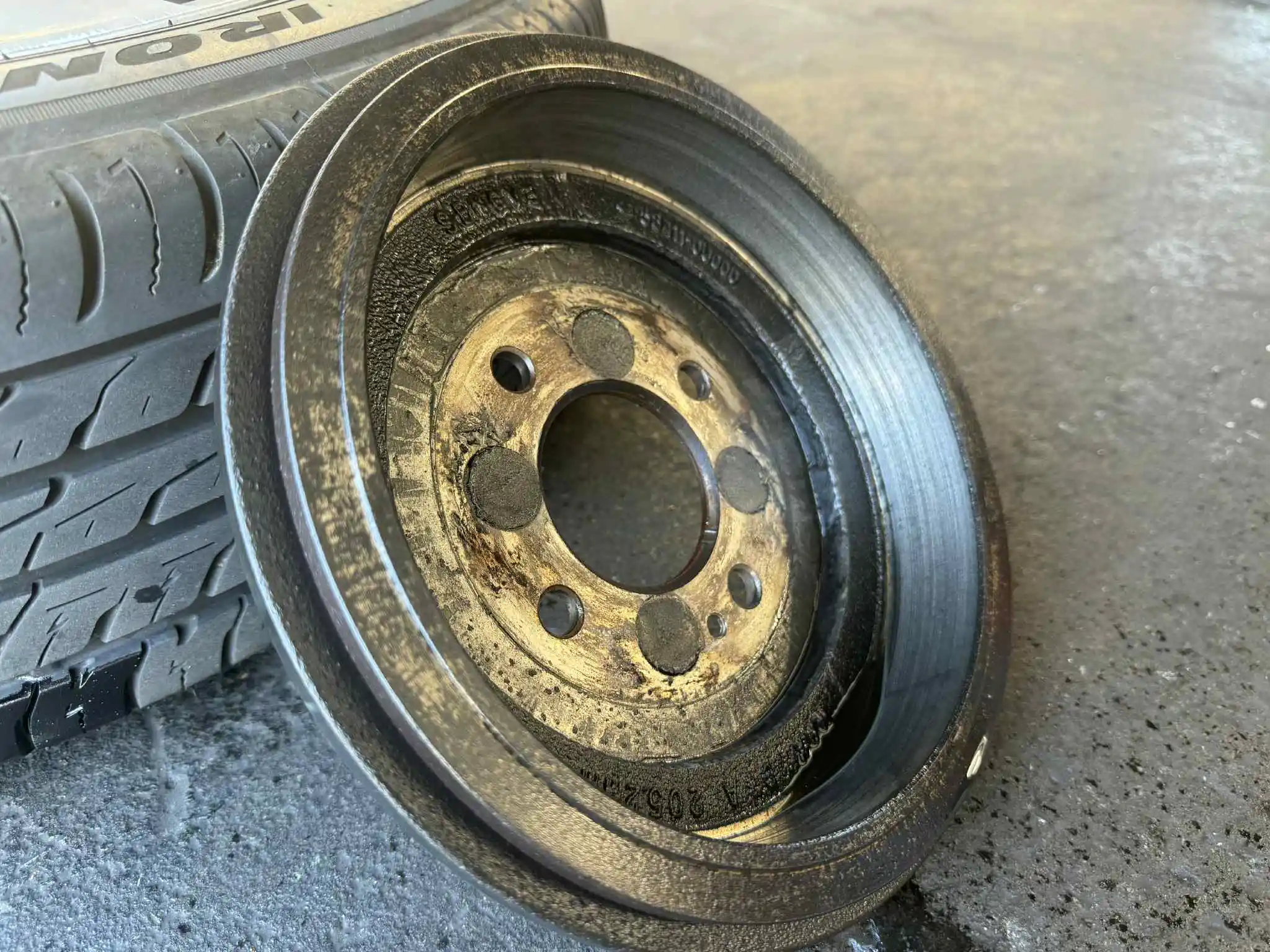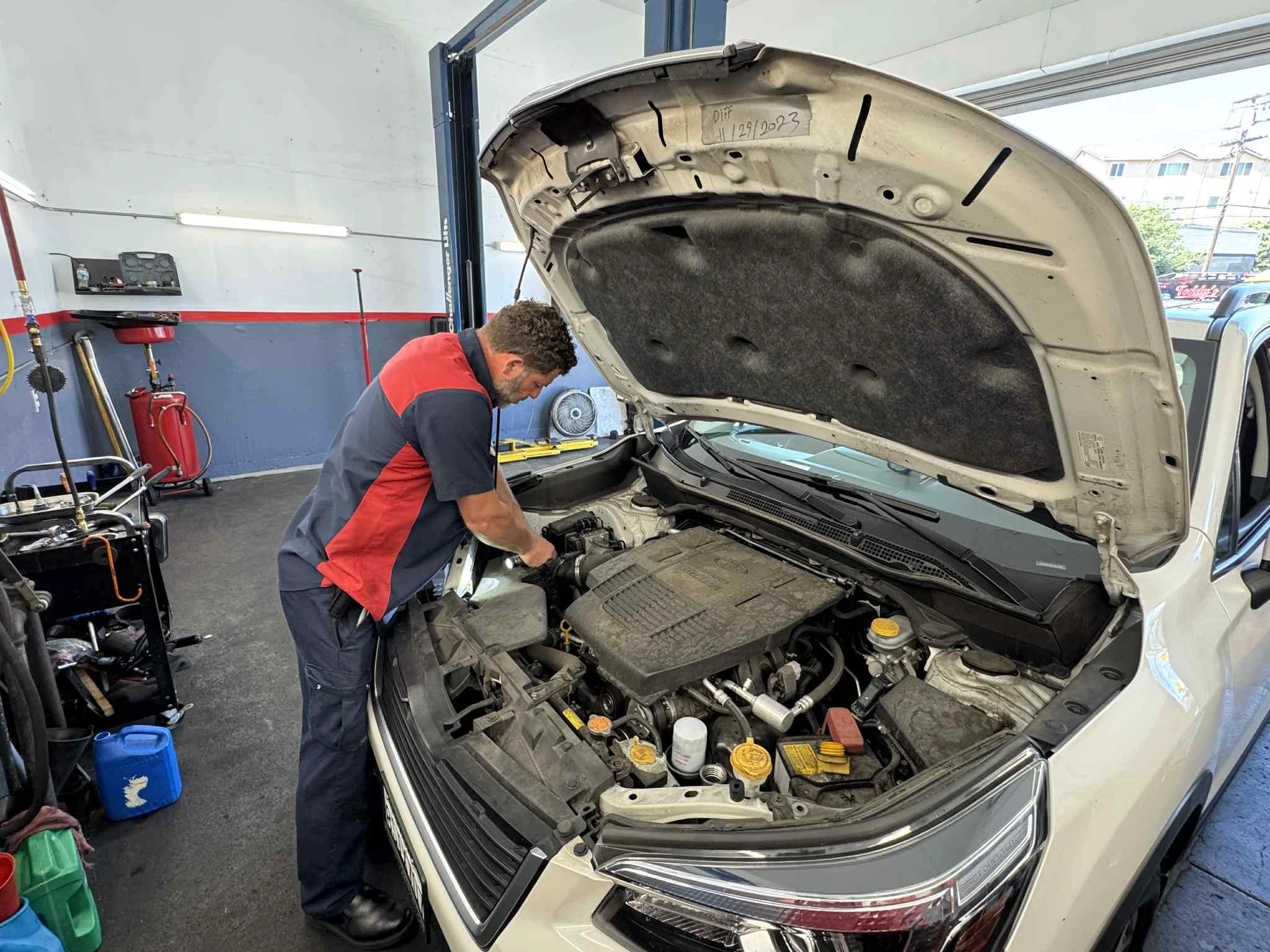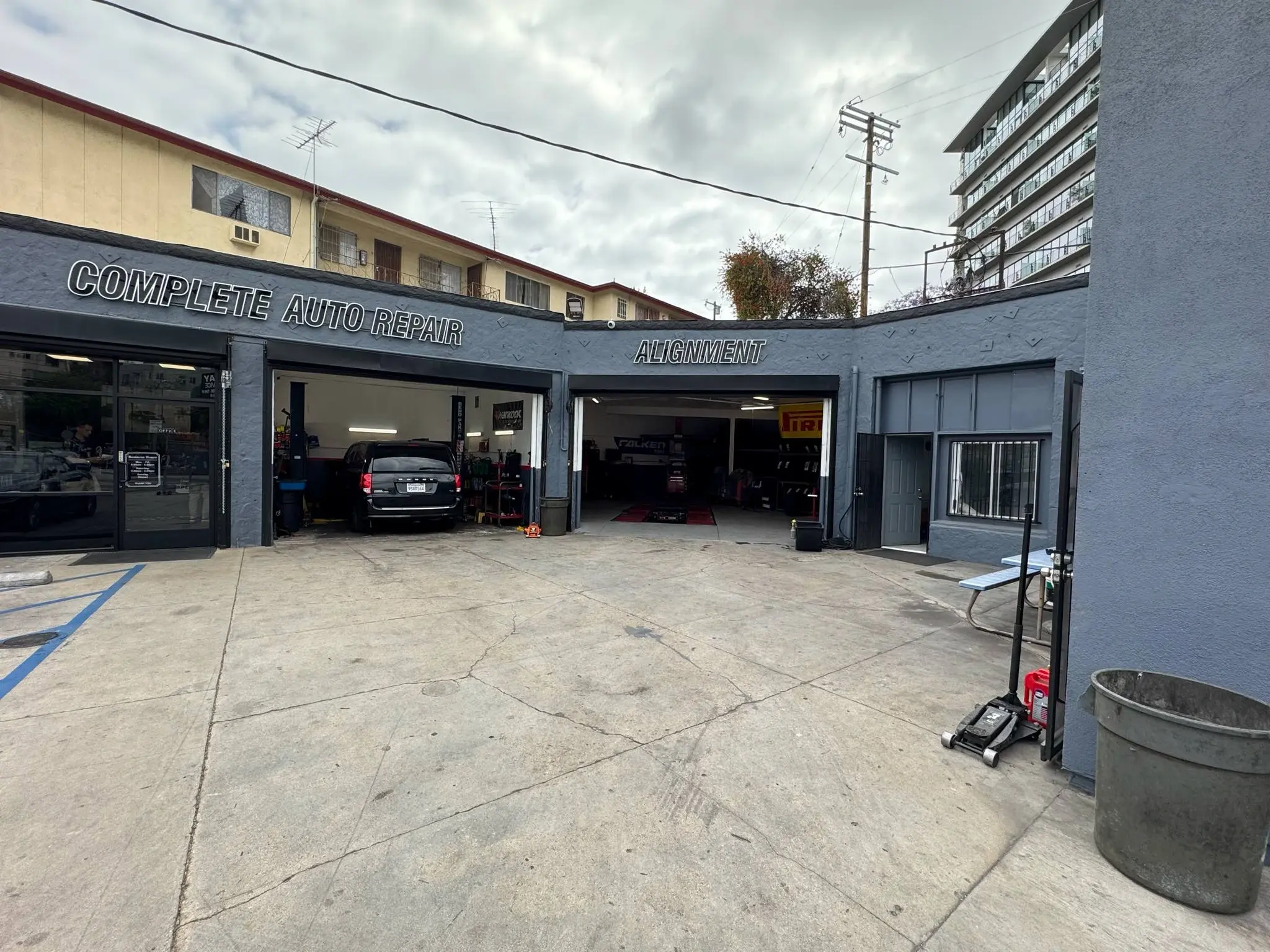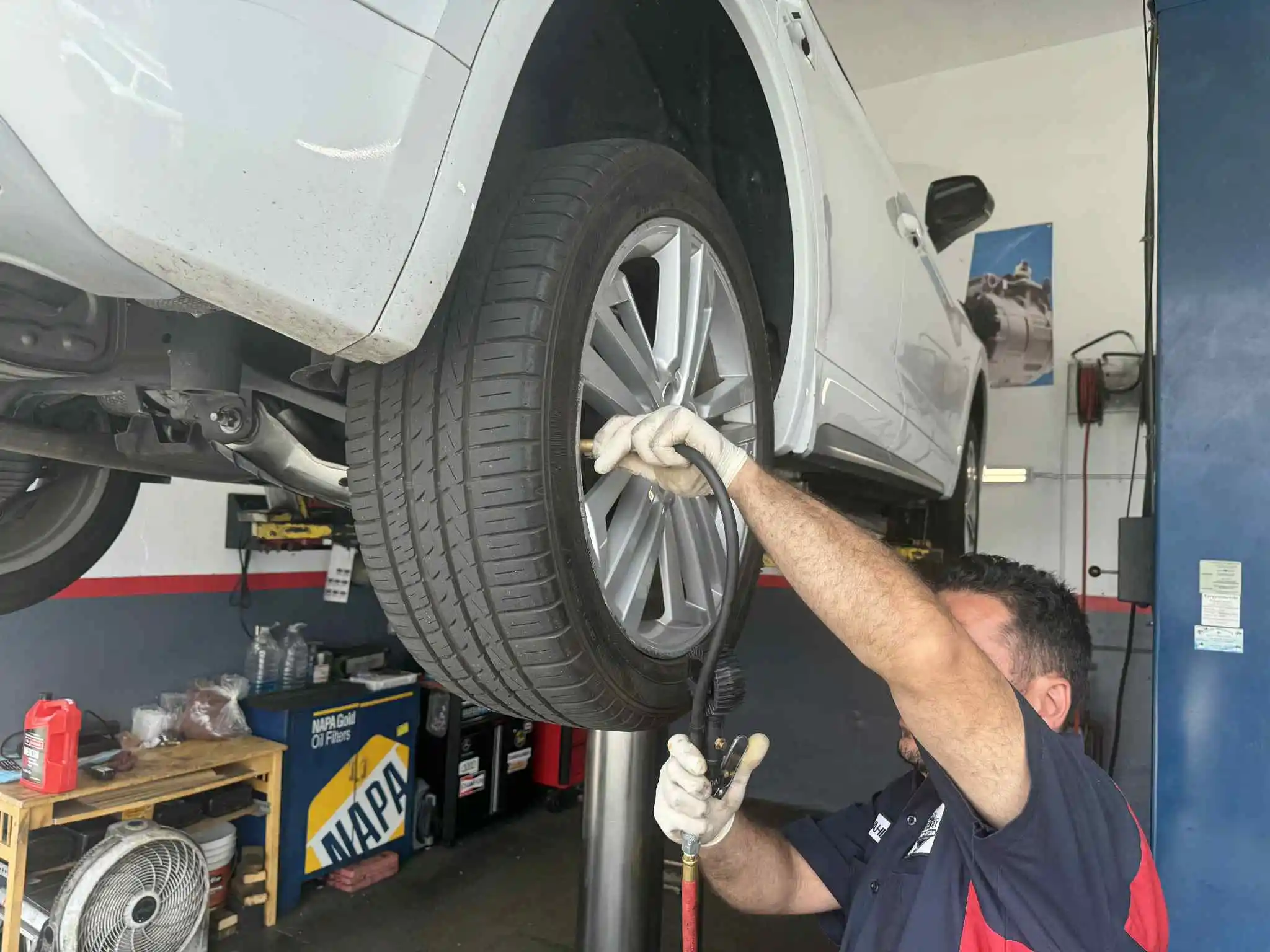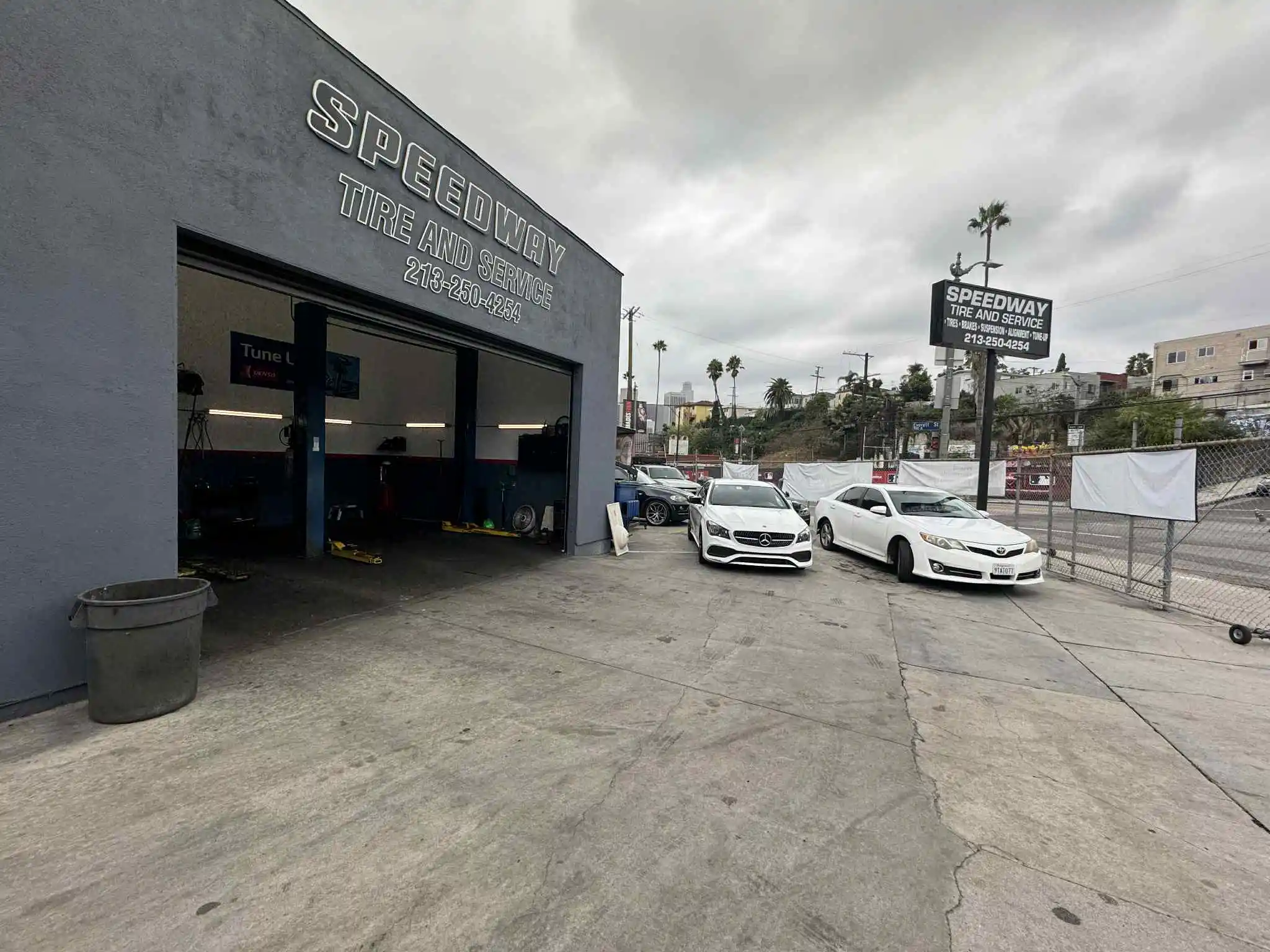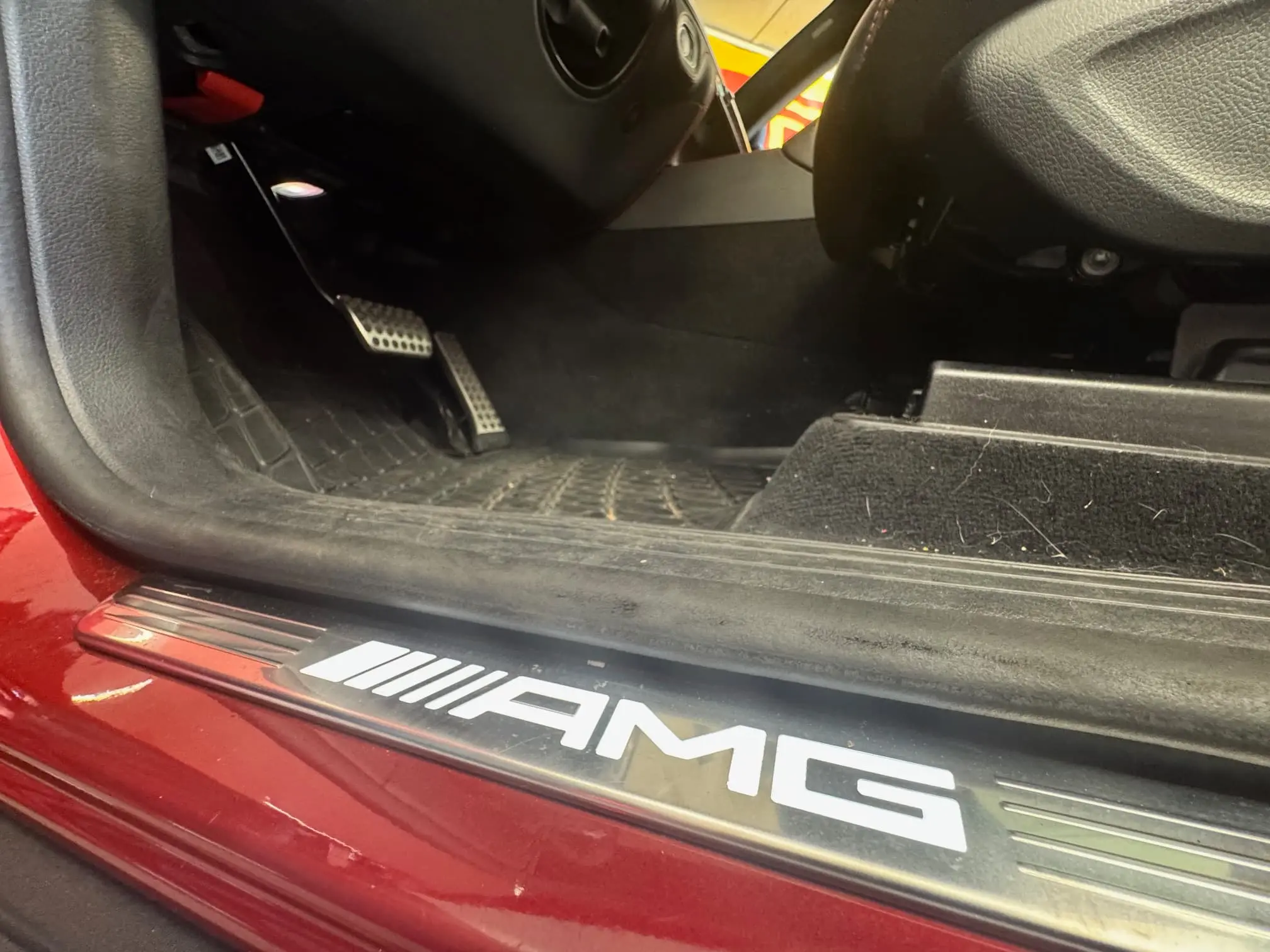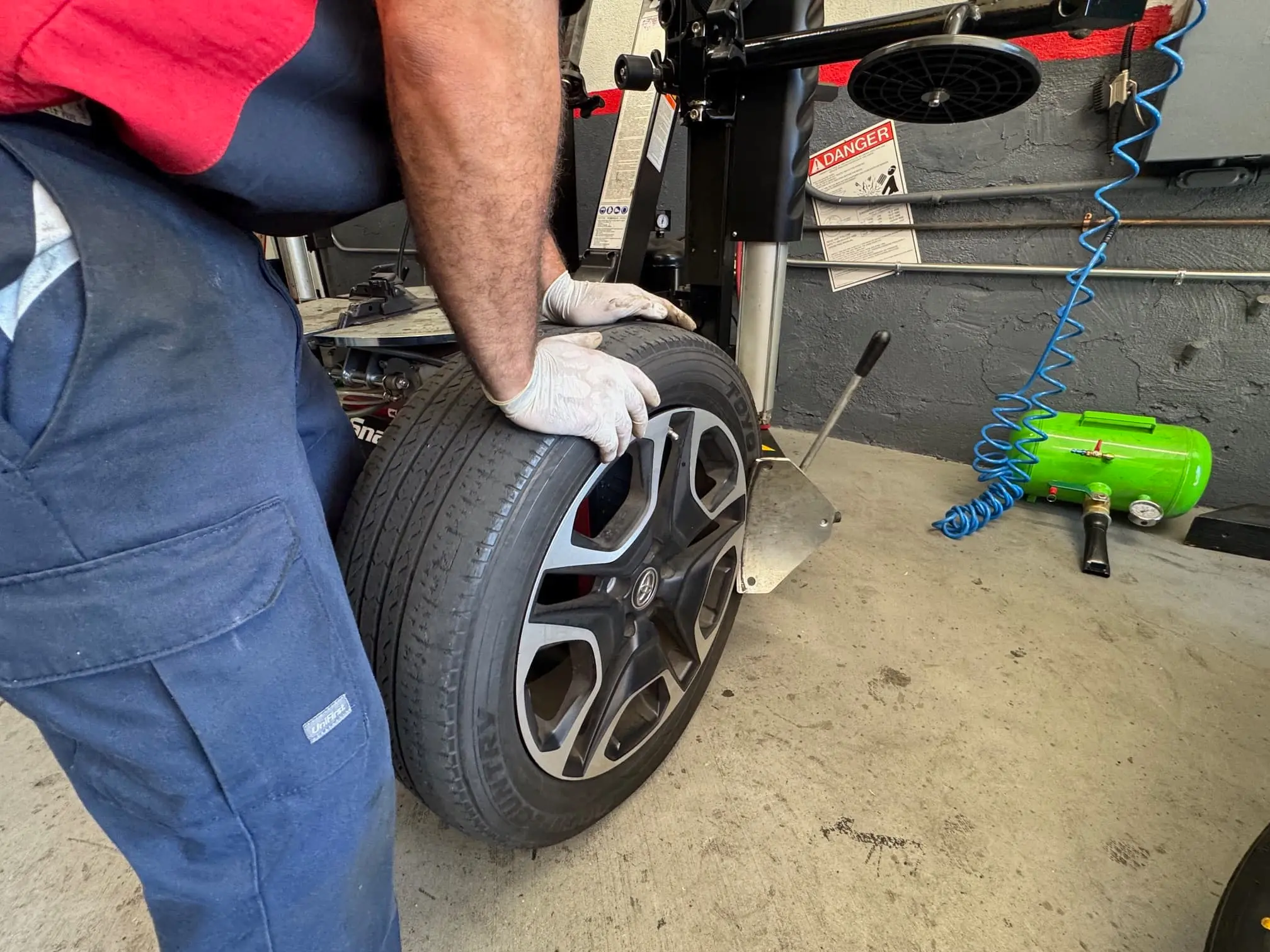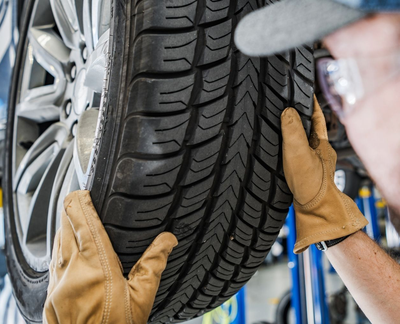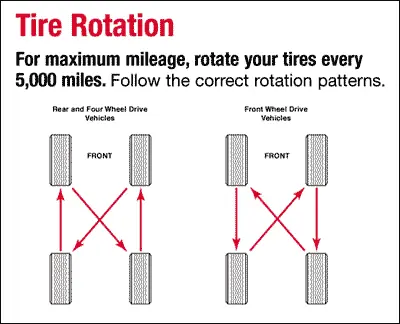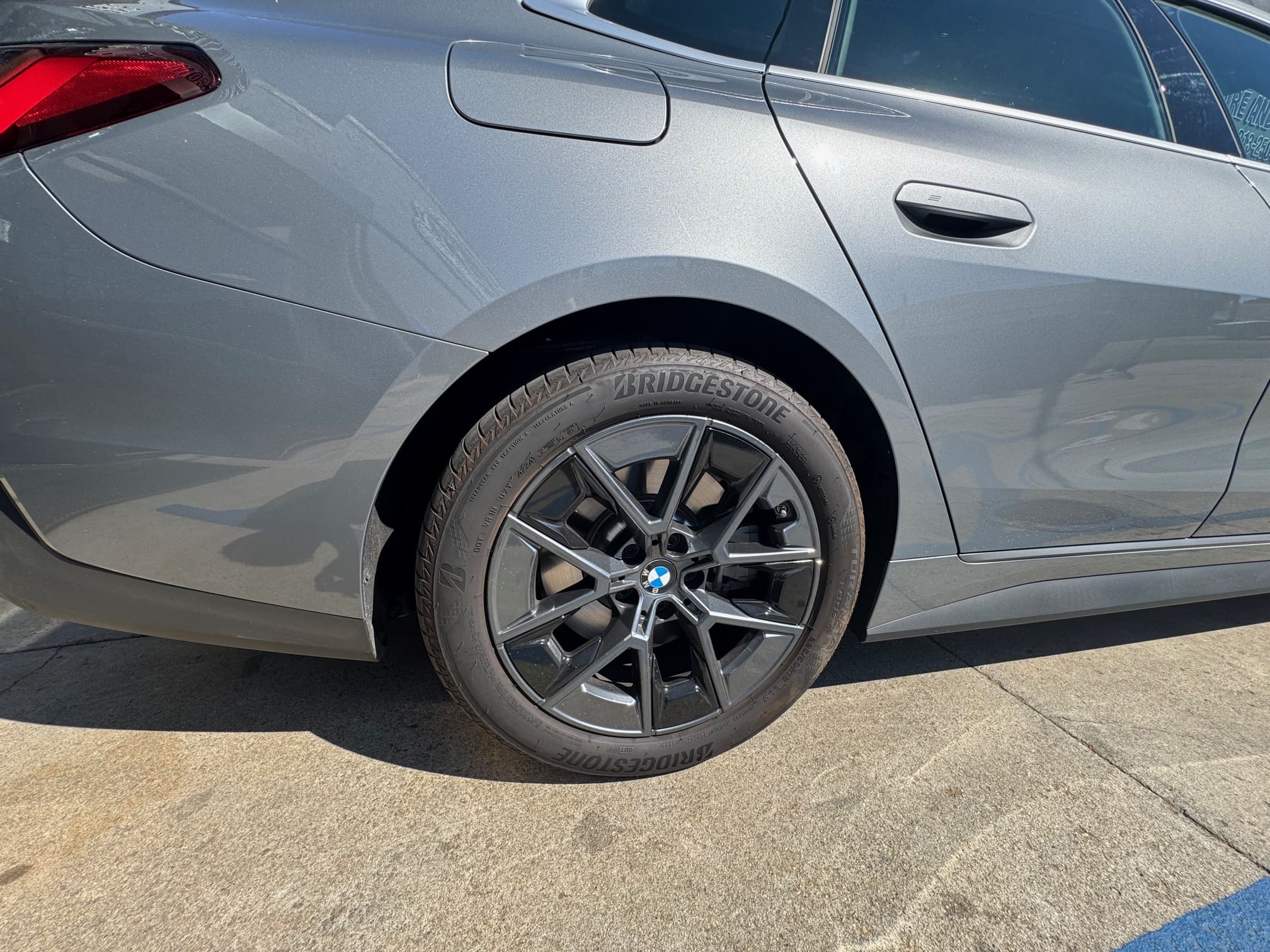Why Do My EV Tires Wear Out So Fast? (A Guide for LA Drivers)

Electric vehicles (EVs) are transforming transportation in Los Angeles, offering zero emissions, instant torque, and lower operating costs. However, many LA EV drivers notice their tires wear out significantly faster than they did on gas-powered vehicles. Understanding why EV tire wear accelerates—and what you can do about it—helps you maximize tire life, maintain safety, and reduce long-term costs.
At Speedway Tire and Service, we've been serving downtown Los Angeles drivers since our founding, providing expert tire services for all vehicle types including the growing EV market. Our ASE-certified technicians understand the unique demands EVs place on tires and how LA's driving conditions accelerate wear.
In this comprehensive guide, we'll explain why EV tire wear happens faster, covering instant torque effects, regenerative braking impacts, increased vehicle weight, tire load ratings, LA-specific driving factors, and how to extend your EV tire life.
Why EV Tires Wear Faster Than Gas Vehicle Tires
Several factors unique to electric vehicles accelerate tire wear.
Instant Torque and Aggressive Acceleration
Electric motors deliver maximum torque instantly, unlike gas engines that build power gradually.
Instant Power Delivery: When you press the accelerator in an EV, electric motors deliver 100% of their torque immediately. Gas engines require time to build RPMs and deliver peak torque. This instant power delivery is exhilarating but hard on tires.
Tire Slip During Acceleration: Instant torque can overwhelm tire traction, especially from stops. Even brief tire slip during acceleration scrubs rubber off tread surfaces. Multiply this by dozens of accelerations daily in LA stop-and-go traffic, and wear accumulates quickly.
Performance Mode Acceleration: Many EVs offer "sport" or "performance" modes that maximize acceleration. While thrilling, these modes significantly increase tire wear by delivering even more aggressive torque to the wheels.
Front Tire Wear on RWD EVs: Rear-wheel-drive EVs concentrate torque on rear tires, causing rear tires to wear 20-40% faster than front tires. This uneven wear requires more frequent tire rotations to maximize overall tire life.
Regenerative Braking Effects
Regenerative braking recaptures energy but creates unique tire wear patterns.
What Is Regenerative Braking: When you lift off the accelerator in an EV, electric motors reverse function, acting as generators to slow the vehicle while recharging the battery. This "one-pedal driving" reduces brake pad wear but affects tires differently.
Increased Tire Loading: Regenerative braking transfers vehicle weight forward onto front tires more aggressively than conventional braking. This increased loading compresses front tire contact patches, accelerating wear.
Frequent Deceleration Cycles: LA driving involves constant speed changes. Each time you lift off the accelerator, regenerative braking engages, loading front tires. Dozens of these cycles daily accumulate significant wear.
Uneven Wear Patterns: Regenerative braking can create specific wear patterns on front tires, including cupping or scalloping if tire pressures aren't maintained properly.
Increased Vehicle Weight
EVs weigh significantly more than comparable gas vehicles due to heavy battery packs.
Battery Pack Weight: EV battery packs weigh 800-1,200 pounds or more. A Tesla Model 3 weighs about 4,000 pounds—roughly 800 pounds more than a comparable gas sedan. This extra weight constantly presses down on tires.
Increased Contact Patch Pressure: Heavier vehicles create higher pressures in tire contact patches (where rubber meets road). Higher pressure accelerates tread wear, especially during acceleration, braking, and cornering.
Tire Deflection and Heat: Extra weight causes more tire deflection (flexing) as tires roll. Increased deflection generates more heat, which accelerates rubber degradation and wear.
Load-Related Wear Patterns: Overloaded tires (tires carrying more weight than designed for) develop specific wear patterns including center wear or edge wear depending on inflation pressure.
Tire Load Rating Importance
Proper tire load ratings are critical for EVs.
What Are Load Ratings: Tire load ratings indicate maximum weight each tire can safely carry. Ratings appear on tire sidewalls as load index numbers (e.g., 95, 98, 101). Higher numbers indicate higher weight capacity.
EV-Specific Load Requirements: EVs require tires with higher load ratings than gas vehicles due to battery weight. Installing tires with insufficient load ratings causes accelerated wear, reduced safety, and potential tire failure.
Load Range Considerations: Some EVs require "XL" (extra load) or "HL" (high load) tires designed to handle additional weight. Standard passenger car tires may not provide adequate capacity.
Consequences of Underrated Tires: Tires with insufficient load ratings for EV weight flex excessively, generate excessive heat, wear rapidly, and risk catastrophic failure. Always verify tire load ratings match or exceed vehicle requirements.
LA-Specific Factors Accelerating EV Tire Wear
Los Angeles driving conditions create additional challenges for EV tires.
Stop-and-Go Traffic
LA's notorious traffic accelerates tire wear through constant acceleration and deceleration.
Frequent Acceleration: Every time traffic moves, EVs accelerate using instant torque that stresses tires. In heavy traffic, you might accelerate and decelerate dozens of times per mile.
Heat Buildup: Constant acceleration and braking generate heat in tires. Heat accelerates rubber degradation and wear. LA's warm climate compounds this issue.
Uneven Wear Patterns: Stop-and-go driving creates specific wear patterns including flat-spotting (temporary flat spots from sitting in traffic) and irregular wear from constant speed changes.
Aggressive Driving Culture
LA's driving culture encourages aggressive acceleration and lane changes.
Rapid Acceleration: Many LA drivers take full advantage of EV instant torque, accelerating aggressively from every stop. While fun, this driving style significantly reduces tire life.
Frequent Lane Changes: Navigating LA traffic often requires frequent lane changes. Each lane change loads tires laterally, scrubbing rubber off tread surfaces.
Highway Speed Variations: LA freeways alternate between high-speed cruising and sudden slowdowns. These speed variations stress tires through repeated acceleration and deceleration cycles.
Road Surface Conditions
LA road surfaces affect tire wear rates.
Rough Pavement: Many LA streets have rough, deteriorated pavement that accelerates tire wear through increased abrasion. Potholes and road damage cause additional tire stress.
Hot Pavement Temperatures: Summer pavement temperatures in LA can exceed 140°F. Hot pavement softens tire rubber, accelerating wear rates.
Concrete vs Asphalt: LA uses both asphalt and concrete road surfaces. Concrete is more abrasive than asphalt, wearing tires faster on concrete-surfaced freeways.
Climate Factors
LA's climate affects tire performance and wear.
Year-Round Warmth: Warm temperatures keep tire rubber soft and pliable, which is good for traction but can accelerate wear compared to cooler climates where rubber stays firmer.
UV Exposure: Intense LA sunshine exposes tires to UV radiation that degrades rubber compounds over time, especially on parked vehicles.
Minimal Temperature Variation: Unlike climates with seasonal temperature swings, LA's consistent warmth means tires don't benefit from cooler periods that slow wear rates.
How to Extend EV Tire Life in Los Angeles
Several strategies help maximize your EV tire life despite accelerated wear factors.
Maintain Proper Tire Pressure
Correct tire pressure is critical for EV tire longevity.
Check Pressure Monthly: EV tires lose pressure over time. Check pressure at least monthly using an accurate gauge. Check when tires are cold (before driving).
Follow EV-Specific Recommendations: EVs often require higher tire pressures than gas vehicles due to increased weight. Always follow pressure recommendations on your vehicle's door placard, not the maximum pressure listed on tire sidewalls.
Adjust for Load: If you regularly carry heavy loads or passengers, consider increasing tire pressure within manufacturer recommendations to handle additional weight.
Monitor TPMS Warnings: Pay attention to tire pressure monitoring system (TPMS) warnings. Address low pressure immediately to prevent accelerated wear and potential tire damage.
Pressure Effects on Wear: Underinflated tires wear on outer edges. Overinflated tires wear in centers. Proper pressure ensures even wear across tread surfaces.
Rotate Tires Regularly
Frequent tire rotation is essential for EVs.
Rotation Frequency: Rotate EV tires every 3,000-5,000 miles—more frequently than gas vehicles. EVs' instant torque and weight create uneven wear that rotation helps equalize.
Rotation Patterns: Follow rotation patterns recommended in your owner's manual. Common patterns include front-to-back rotation for non-directional tires or side-to-side rotation for directional tires.
Benefits of Rotation: Regular rotation ensures all tires wear evenly, maximizing overall tire life. It also provides opportunities to inspect tires for damage or irregular wear patterns.
Professional Rotation: Have rotations performed by professionals who understand EV-specific requirements and can inspect tires thoroughly during service.
Choose EV-Specific Tires
Tires designed specifically for EVs offer better wear resistance.
EV Tire Design: EV-specific tires feature reinforced construction to handle extra weight, specialized rubber compounds for wear resistance, and designs optimized for instant torque delivery.
Load Rating Verification: Ensure replacement tires meet or exceed load ratings required for your EV. Never install tires with insufficient load capacity.
Low Rolling Resistance: Many EV tires feature low rolling resistance designs that improve range while maintaining durability. These tires often wear better than standard tires under EV demands.
Noise Reduction: EV-specific tires often include noise-reduction features important in quiet EVs where tire noise is more noticeable.
Adjust Driving Habits
Modifying how you drive significantly impacts tire life.
Gradual Acceleration: Resist the temptation to use full throttle at every stop. Gradual acceleration reduces tire slip and wear while still providing adequate performance.
Regenerative Braking Adjustment: Many EVs allow you to adjust regenerative braking intensity. Moderate settings reduce front tire loading compared to maximum regeneration.
Anticipate Traffic: Look ahead and anticipate traffic flow to minimize sudden acceleration and braking. Smooth, consistent driving reduces tire stress.
Avoid Aggressive Cornering: Take corners at moderate speeds to reduce lateral tire loading. Aggressive cornering scrubs rubber off tread surfaces.
Use Eco Mode: Many EVs offer "eco" modes that limit power delivery and encourage efficient driving. These modes reduce tire wear while maximizing range.
Maintain Proper Wheel Alignment
Correct wheel alignment prevents premature tire wear.
Alignment Importance: Misaligned wheels cause tires to scrub sideways as they roll, rapidly wearing tread. EVs' instant torque and weight make them especially sensitive to alignment issues.
Alignment Frequency: Check alignment annually or after hitting potholes or curbs. LA's rough roads make alignment checks especially important.
Signs of Misalignment: Vehicle pulling to one side, uneven tire wear, or steering wheel off-center when driving straight indicate alignment problems requiring immediate attention.
Professional Alignment: Have alignment performed by shops with modern equipment and EV experience. Proper alignment ensures tires roll straight, minimizing wear.
Monitor Tire Condition
Regular tire inspections catch problems early.
Visual Inspections: Inspect tires monthly for cuts, bulges, embedded objects, or unusual wear patterns. Address problems immediately to prevent further damage.
Tread Depth Monitoring: Check tread depth regularly using tread depth gauges or the penny test. Replace tires when tread depth reaches 4/32" for optimal wet weather safety.
Professional Inspections: Have tires professionally inspected during rotations and other service visits. Technicians can identify problems you might miss.
Irregular Wear Patterns: Unusual wear patterns indicate underlying problems like incorrect pressure, misalignment, or suspension issues requiring attention.
When to Replace EV Tires
Knowing when to replace tires ensures safety and optimal performance.
Tread Depth Guidelines
Minimum tread depth requirements ensure adequate traction.
Legal Minimum: California law requires minimum 1/32" tread depth. However, this provides minimal safety margin.
Recommended Replacement: Replace tires when tread depth reaches 4/32" for optimal wet weather traction. EVs' instant torque and weight make adequate tread depth especially important.
Tread Depth Measurement: Use tread depth gauges for accurate measurements. Check multiple locations across each tire to identify uneven wear.
Penny Test: Insert a penny into tread grooves with Lincoln's head upside down. If you can see the top of Lincoln's head, tread depth is below 2/32" and tires should be replaced immediately.
Age Considerations
Tire age affects safety regardless of tread depth.
Six-Year Guideline: Consider replacing tires after six years regardless of tread depth. Rubber compounds degrade over time, reducing traction and increasing failure risk.
Ten-Year Maximum: Never use tires more than ten years old regardless of appearance. Age-related degradation creates serious safety risks.
Date Code Location: Find tire manufacturing date on sidewalls. The DOT code's last four digits indicate week and year of manufacture (e.g., "2319" means 23rd week of 2019).
UV and Heat Degradation: LA's intense sun and heat accelerate tire aging. Consider more conservative replacement intervals in harsh climates.
Damage and Wear Patterns
Certain conditions require immediate tire replacement.
Sidewall Damage: Cuts, bulges, or bubbles in sidewalls indicate structural damage requiring immediate replacement. Sidewall damage cannot be repaired.
Tread Separation: Tread separating from tire body is extremely dangerous. Replace tires immediately if you notice separation.
Severe Irregular Wear: Extreme cupping, scalloping, or other irregular wear patterns may indicate tires are beyond safe use even if tread depth seems adequate.
Puncture Repair Limits: Tires with multiple repairs, repairs in sidewalls, or repairs in tread shoulders should be replaced rather than repaired again.
Why Choose Speedway Tire for EV Tire Service
Speedway Tire and Service provides expert EV tire service for Los Angeles drivers.
EV Tire Expertise
Our ASE-certified technicians understand EV-specific tire requirements.
EV Experience: We service all types of EVs including Teslas, Rivians, Lucids, and other electric vehicles. We understand the unique demands EVs place on tires.
Load Rating Verification: We ensure replacement tires meet or exceed load ratings required for your specific EV model. We never install underrated tires that compromise safety or accelerate wear.
EV-Specific Tire Selection: We stock and recommend tires specifically designed for electric vehicles, offering better wear resistance, load capacity, and performance than standard tires.
Comprehensive Tire Services
We provide complete tire services for EV owners.
Tire Sales: Wide selection of EV-appropriate tires from leading manufacturers at competitive prices.
Professional Installation: Expert installation ensuring proper mounting, balancing, and torque specifications for EV wheels.
Tire Rotation: Regular rotation services to maximize tire life and ensure even wear across all positions.
Wheel Alignment: Precision alignment services using modern equipment to prevent premature tire wear.
Tire Repair: Professional tire repairs when possible, with honest recommendations when replacement is necessary.
TPMS Service: Tire pressure monitoring system service including sensor replacement and programming.
Convenient Downtown LA Location
We're located in the heart of downtown Los Angeles for easy access.
Address: 1165 West Sunset Blvd, Los Angeles, CA
Accessibility: Easy access from all parts of LA including downtown, Echo Park, Silver Lake, and surrounding neighborhoods.
Parking: Convenient parking available for service appointments.
Hours: Extended hours to accommodate busy schedules.
Quality and Value
We provide quality service at fair prices.
ASE Certification: Our technicians hold ASE certifications demonstrating expertise and professionalism.
Quality Products: We sell quality tires from reputable manufacturers, not cheap imports that wear quickly or compromise safety.
Transparent Pricing: Clear, upfront pricing with no hidden fees or surprise charges.
Honest Recommendations: We recommend services you need and explain why, never pushing unnecessary work.
Take Action: Protect Your EV Tires Today
Don't let accelerated EV tire wear compromise your safety or drain your wallet. Understanding why EV tires wear faster—and taking proactive steps to extend tire life—saves money and ensures optimal performance.
If you're experiencing rapid tire wear on your EV, don't wait. Have your tires inspected by professionals who understand EV-specific requirements.
Ready to extend your EV tire life?
???? Call Speedway Tire and Service today at (213) 250-4254
We'll inspect your tires, check pressure and alignment, and recommend solutions to maximize tire life. We'll ensure you have the right tires with proper load ratings for your EV.
Visit us at: 1165 West Sunset Blvd Los Angeles, CA
We provide:
•EV-specific tire sales and installation
•Tire rotation services
•Wheel alignment
•Tire pressure checks
•TPMS service
•Professional tire inspections
Don't let rapid tire wear reduce your EV's efficiency and safety. Schedule your tire service today and discover how proper tire care extends tire life, improves performance, and saves money.
About Speedway Tire and Service
Speedway Tire and Service has been serving downtown Los Angeles drivers with expert tire and automotive services. Our ASE-certified technicians provide professional service for all vehicle types including the growing electric vehicle market.
We specialize in EV tire service, understanding the unique demands electric vehicles place on tires and how to maximize tire life despite accelerated wear factors.
Contact Speedway Tire and Service:
•Phone: (213) 250-4254
•Address: 1165 West Sunset Blvd, Los Angeles, CA
•Certification: ASE Certified Technicians
•Service Area: Downtown Los Angeles, Echo Park, Silver Lake, and surrounding communities
Looking for an honest Auto Repair Shop in Los Angeles? Call Speedway Tire and Service Today
Whether you’re driving through LA traffic or cruising the freeways, your car deserves expert care. Located in Los Angeles, Speedway Tire and Service offers reliable oil changes, brake repairs, tire services, and more—all backed by experienced technicians and honest pricing.


